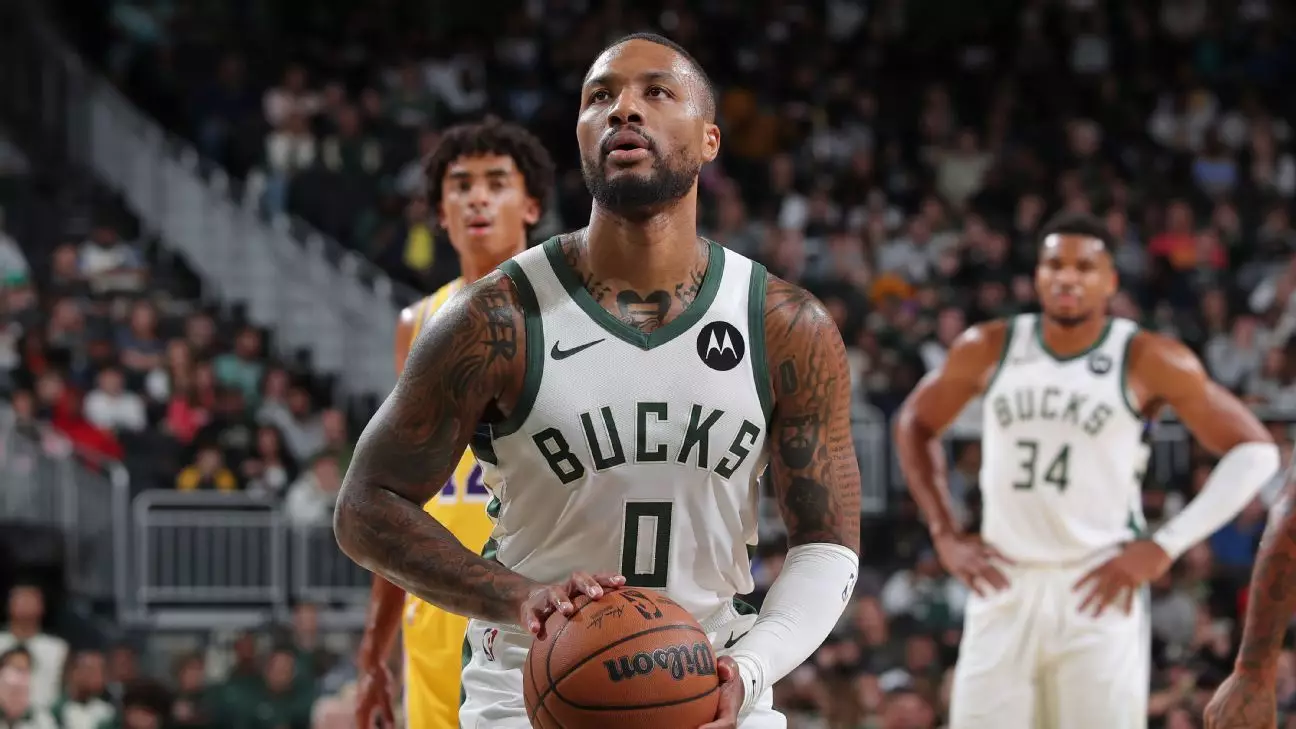Damian Lillard, the Milwaukee Bucks’ star guard, faces a significant health challenge which has thrown both his personal season and the team dynamics into uncertainty. The diagnosis of deep vein thrombosis (DVT) in his right calf is alarming, not just for Lillard as an athlete but also for the Bucks as a team grappling with injury issues at a critical point in the season. The nature of deep vein thrombosis—characterized by blood clots that can lead to serious complications—brings a layer of anxiety for fans and management alike. The announcement came when the team was already struggling, suffering from a recent spate of losses in the Eastern Conference.
The Weight of Team Dynamics
With Lillard sidelined, the Bucks lose not just his scoring prowess, which averages 24.9 points and 7.1 assists per game, but also the synergy he forms with his teammates, particularly with superstar Giannis Antetokounmpo. As the highest-scoring duo in the league, their partnership is imperative for Milwaukee’s success. Their ability to score effortlessly—over 55 points on average combined—was expected to be a cornerstone for the Bucks’ playoff ambitions. However, in Lillard’s absence, the team’s scoring dips noticeably to 108.5 points per game, highlighting the detrimental impact of his injury. Given that the playoffs loom large, Lillard’s condition could jeopardize any hope of a deep postseason run.
Prioritizing Health Over Performance
The Bucks organization has made the right decision to prioritize Lillard’s health above all else. General Manager Jon Horst’s reassurances that “Damian’s health is our No. 1 priority” reflect a wise approach in a league that often places performance over player well-being. DVT can lead to serious risks if not addressed promptly and adequately, and it is commendable that the team recognized the issue and sought immediate medical intervention. Lillard’s use of blood-thinning medication is a necessary precaution that indicates their seriousness in dealing with this condition; however, the uncertainty of his return and the risks associated with this condition remain alarming.
Historical Context and Future Implications
This is not the first time injuries have derailed the Bucks’ aspirations—last season, Antetokounmpo’s calf injury contributed to their early playoff exit. The fact that Milwaukee is battling similar issues again brings into question their depth and resilience as a unit. However, it also tests the leadership skills of head coach Doc Rivers and the remaining roster to step up in Lillard’s absence.
With only 11 games left in the regular season, every match becomes increasingly critical. While the Bucks still hold a playoff spot, their recent inconsistencies position them precariously. Each game could mean the difference between a favorable seeding and a first-round clash with a formidable opponent. The pressure is immense, and how the team adapts will determine whether they can withstand this storm without their star player.
In the grander narrative of NBA health and safety, Lillard’s situation serves as a reminder of the challenges athletes face. Whether dealing with minor injuries or major health crises, the balance between performance, health, and long-term wellbeing is a critical conversation that basketball fans and teams must engage in more earnestly.


Leave a Reply